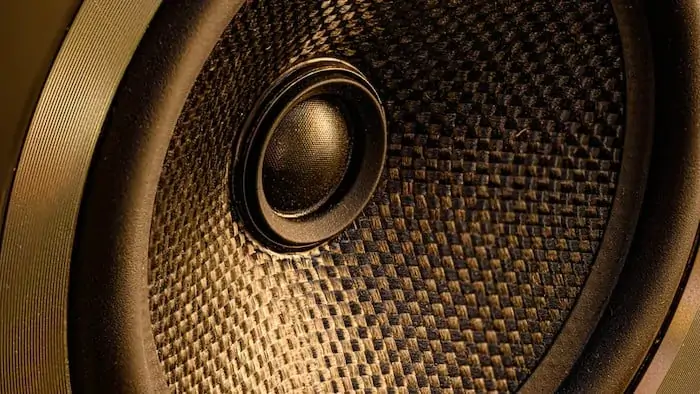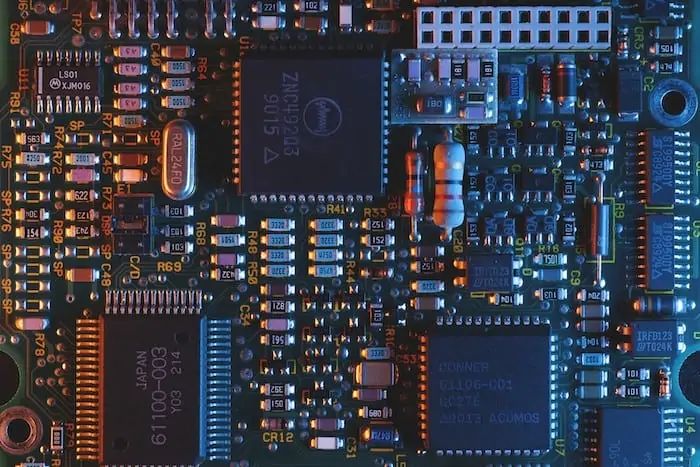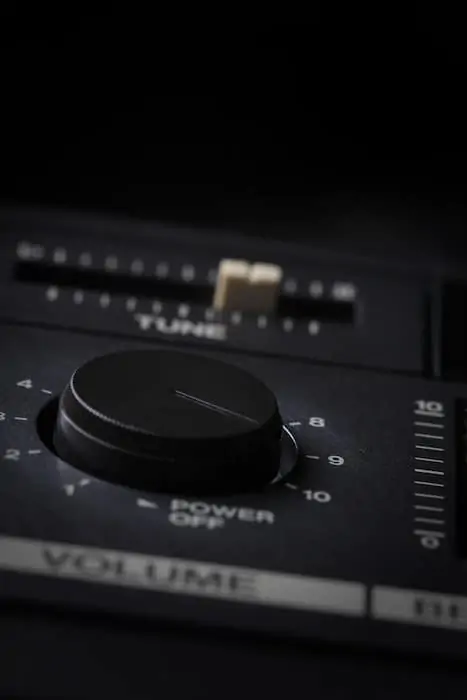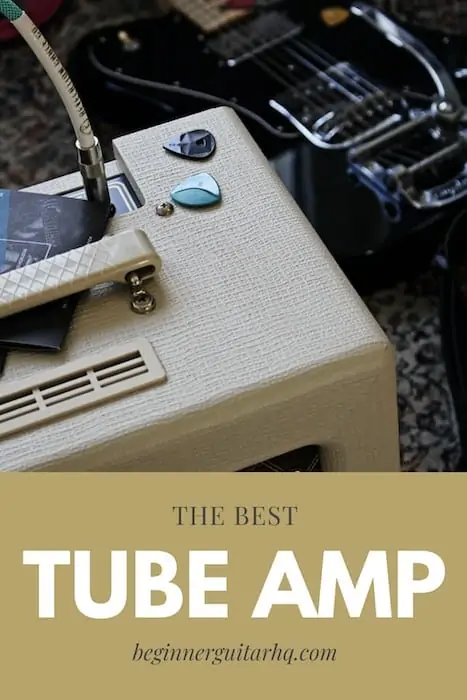Despite solid-state and even digital modeling amps having been around for several years now (and sounding pretty damn good), we guitarists just can’t seem to get enough of that vintage tubey goodness.
Maybe it just can’t be beaten, maybe there’s a bit of snobbery going on (to be honest, it’s probably a bit of both), but these golden guitar amplifiers really do sound fantastic.
The problem is, most tube guitar amps are big, loud, and bulky units – not so great for those of us living in inner-city apartments, or just looking for a portable solution to rock out with.
On the other hand, the majority of smaller amps tend to be aimed at the beginner market (often dubbed ‘practice amps’), and consequently sound not much better than a 4-year-old child trying to play the violin.
That is, unless you manage to bag yourself a small tube amp.
In this article, we’re going to take a look at 11 of the best small tube amps on the market. From 1×12” combos to lunchbox-style tube amp heads, we’ve got ‘em all, and we’ve sure as heck got one here that’s going to do the job for you.
But first, let’s start with a little recap on tube amps, for anyone who is either a newcomer or has been out of the tube amp game for a while.
Contents
What is a tube amp?
Tube guitar amps use a special kind of component called the vacuum tube (called valve by our British friends), inside the circuitry.
These tubes are what amplifies the sound of your guitar so that your guitar can be heard through the speakers.
But that’s not all they do.
Once guitarists started really pushing their guitar amps, they started to realize that the tubes break up in a beautifully complex kind of way, a way which we now know as overdrive.
And so, nowadays, most tube amps have some valves in the preamp circuit which are designed to give the guitar its tone and grit, and then some cleaner ones sitting in the power amp circuit to take care of volume duties.
I mean, it’s a little more complicated than that, but that’s the gist of things anyway.
Compare these amps to the newer (but still pretty well-established) solid-state amps, which use transistors in the place of tubes, and you start to get the difference.
From a sound perspective, tube amps tend to be warmer and more ‘natural’ sounding but moreover are often thought to be more responsive to different kinds of playing.
Plus, they give you the opportunity to try out some different tube types and manufacturers to slightly modify the sound of your guitar tone.
What constitutes a small tube amp?
‘Small’ is kind of a subjective term, and so there isn’t really any particular definition of what makes a small tube amp.
For most people though, there are two things to take into consideration:
- Wattage
- Size of the amp itself
Most small tube amps come in around 10-15w, and you could probably get up to around 25 watts before it’s no longer called a ‘small’ tube amp.
On the physical dimensions front, it depends a little on whether we are talking about a combo amp or a head.
For a combo, a small tube amp typically has just one speaker, which might be up to 12 inches in diameter.
For heads, most small tube amps are ‘lunchbox’ style (carryable with one hand), like the Orange Dual Terror. But, you’ve also got rack-mounted units like the Laney IRT Studio, which I’d also consider a small amp, compared to say, a 100w Marshall JCM head.
Why do you need a small tube amp?
There are two big reasons why guitarists opt to purchase a small tube amp.
The first is the physical size of the amp.
If it’s smaller, it takes up less space in your room, or in the back of your car. They are also easier to lug around to gigs, and considering most larger venues will mic up your amp anyway, the size on stage doesn’t matter so much.
The other consideration is wattage and volume.
With tube amps, you typically find this issue where once you crank the volume past say, 1 or 2, they just get incredibly loud.
This is especially the case for a lot of Fender and Fender-esque amps.
Because you don’t really get that nice tube saturation happening until you’re really pumping the input, you basically can’t get the good stuff out of these amps at low volumes.
So, guitarists might choose to grab a small tube amp (like one of the ones we’re about to discuss) for home practice, so they can crank the hell out of the input and still not disturb their neighbors.
Vox AC4C1
There can’t be many guitarists who haven’t heard the name Vox.
Made famous by their gorgeous AC30 amp, the British company is an absolute staple when it comes to tube guitar amps.
On the small tube amp front from Vox we have the AC4C1, more or less a baby version of that delicious 30w tube beast.
The Vox AC4C1 is a combo amp with a single 10 inch speaker, and maxes out at just 4 watts, so it’s hardly going to blow the house down.
That said, the 4 watts of tube goodness offer more than enough to be heard in the bedroom, and can certainly get into grit territory when pushed.
Being such a small amp, the Vox AC4C1 has a cute little lunchbox style handle on the top, and is easily carryable on the train, bus, or probably even a plane if you wanted to.
Controls on the AC4C1 are pretty limited, as you’d expected, with just bass and treble controls on the EQ front, and input gain knob, and a master volume control, all of which use the famed Vox chicken head knobs, which are nice and retro.
It’s an absolute classic, that’s for sure, having been around since 1961, and is sure to put a smile on your face if you’re looking for that gorgeous British clean sound, thanks to the Top Boost circuitry in this amp.
It’s also a great platform for guitar effects pedals, so get experimenting!
Laney IRT Studio
Next up we have the Laney IRT Studio.
This is actually the amp I most previously owned, and I can’t speak highly enough of this unit.
Laney are a British company known for their rock and metal amps, and this amp does not disappoint on that front.
In fact, I actually used this amp in a hardcore band for both live performances and recordings.
Here that gritty, mid-focused drive tone at the start of this track:
But to be honest, what really blew me away with the Laney IRT Studio is its clean channel.
Seriously, you can get some absolutely chimey cleans out of these amp, though I found it best when used with the Boost engaged and the input gain cranked up a bit, as in the intro to this track:
The IRT Studio has both 15w and 1w inputs (so it’s great for band practice and for home practice), and has three channels:
- Clean
- Rhythm
- Lead
The clean and rhythm channels share an EQ section, where the lead is its own channel altogether.
Plus, it has a really nice reverb, and some sick output options, including a DI output, a headphone output, and the ability to use any of these outputs with a cab or dummy load attached, which is actually pretty rare.
I’ve barely begun to touch the surface of what this amp offers, but I can tell you this:
If you get it, you will not be disappointed.
Fender Super Champ
There’s not a shot in hell that you’ve landed on this article about small tube amps, and haven’t at least heard of Fender.
Not only are their tube amps some of the most popular and widely heard, but their Telecaster and Stratocaster guitar models are pretty much the most famous guitar shapes on earth.
They’re an American brand, started by Leo Fender way back when, and boy do they have a big range of excellent guitar amplifiers.
They’ve got quite the range of small tube amps as well (there are two of them on this list), but the one we’re about to take a look at is the Fender Super Champ.
The Super Champ is a 15w tube amp with a 10-inch speaker, so it’s certainly portable, and while it might not be quite as loud as a 4×10 Bassman, it still packs quite a punch, owing to two 6V tubes and one 12AX7 preamp tube.
What’s most impressive (and interesting) about the Super Champ is that it offers a massive 16 different amp voices in one.
So, it’s not just an epic practice tube amp, it’s 16 epic practice tube amps!
Plus, you get an array of digital sound effects, including:
- Reverb
- Reverb + delay
- Chorus
- Chorus + reverb
- Chorus + delay
- Tremolo
- Vibratone
- Delay
The delay has its own tap tempo button (handy), and on the EQ front, you get a bass and treble knob (good enough).
To take things up another notch, the Fender Super Champ has two channels with separate volume controls, allowing you to dial in a rhythm tone and then crank it up a little for soaring leads.
This is switchable on the front panel, or you can plug a footswitch into the rear to keep your hands free for playing.
I’m sure you’ll agree, this is an insanely versatile small tube amp, especially considering the cost.
Peavey 6505 Mini
The 5150/6505 amps have been the jewel of the punk and metal crowns for decades now, but they do come with one problem:
They are heavy as hell.
Lugging one of those bad boys around is always a back breaker, and not great when you’re trying to carry your guitar in the other hand and wander back to your parking spot after a gig.
Which is why I can’t get enough of the Peavey 6505 Mini.
This little lunchbox head boasts 20 watts of high gain goodness, and it sounds every bit as good as the regular sized 6505, minus a little headroom.
As with the standard 6505, you get green and red channels, with bright and crunch modes, and resonance and presence controls on the power amp side.
That 20w output can be switched down to just 5w or even 1w, for bedroom practice duties, and if you really want to go silent, there is a headphone output on the rear.
You also get a direct output with mic/cab simulation, so you can plug the Peavey 6505 Mini right into a PA and skip the sound on stage altogether.
Especially hand is the effects loop for guitar pedals, and two footswitch inputs for switching channel/boost and reverb/effects loop.
6505s have always been on the pretty affordable end, which is something I really love about them, since they hold up to amps that cost 4x as much, and the Peavey 6505 Mini is even cheaper, so there’s not much to complain about there!
Fender Blues Junior III
It does not get much cooler (or more bluesy) than the Fender Blues Junior III.
This gorgeous little tweed amp crams in a single Jensen P12N 12-inch speaker, and a decent 15 watts.
Don’t let the small wattage fool you, though, this aim absolutely pumps.
Like most Fender tweed amps, this guy cranks up pretty loudly pretty quickly, though of course still within range of bedroom practice if you hold back a little.
It breaks up like nothing else, giving you epic SRV or Hendrix vibes with ease.
The controls are a little tricky at first, because you’ve got Master and Volume, which seem like two volume controls.
Basically, the Master controls your input, and the Volume cranks up the output.
There is no dedicated gain control, meaning you get more drive the harder you crank the Master input control.
To add a little more flexibility in terms of tonality, it might be a wise idea to add a distortion pedal like the Ibanez TS9.
There is still some room for changing the tone up, with a footswitchable FAT switch bringing a bit more low end into play, and a spring reverb taking care of space duties.
Pump a Fender Strat into this guy on the middle pickup position, and you’ve soaring blues lead tones for days!
Orange Micro Terror
Perhaps the first lunchbox amp, or at least the first one to really blow up the market, was the Orange Tiny Terror.
This sexy little character is still one of my favorite amps, regardless of it being a ‘little’ amp.
But, taking things down a notch (in size, not in character) is the newer Micro Terror, which has helped me learn that on the scale of all things that are small, ‘micro’ is smaller than ‘tiny’.
The Micro Terror packs a fairly respectable 20 watts into this super small package, which is interesting considering the Tiny Terror, which is a bigger amp, is just 15 watts.
I guess this is possible because the Micro Terror is a hybrid amp, with a tube preamp section and solid state power section.
Power tubes tend to be pretty massive and take up a lot of space, so removing this component and swapping it out for a transistor means the Micro Terror’s footprint can be reduced significantly.
Tube amp purists might shudder in disgust at the idea of a hybrid amp, but honestly, in my opinion, it’s the preamp stage that really matters for tubes anyway, so I’m more than happy with a solid state power section.
This particular amp is really aimed more at the bedroom practice market than the live performance one, as evidenced by the presence of an aux input and a headphone output jack on the front panel.
This is a pretty cool feature, to be honest, as it allows you to plug in your phone, play some music, and then jam along to it, all in relative silence.
I also really like how the headphone jack is on the front, as consumer headphones tend to have fairly short cables and so having it around the back can actually be a bit of a pain in the ass.
The controls of the Micro Terror are fairly simple. You get a gain control (which lets you get nice and fuzzy, an output volume control, and a single tone control which is basically your EQ section).
On the rear is a single speaker output, and the power jack.
In terms of the sound of this amp, you’re getting exactly what you think you’re getting:
That creamy, rich, fuzzy, balls-to-the-wall British Orange tone. Just lovely.
Supro Blues King 8
Even for those of you who have been playing guitar for quite a while now, you might not have heard the name Supro before.
I’ll be honest, it was only a few years ago when I first discovered the brand.
They’re an American company, building amps, cabs, and pedals as well.
They’re definitely rocking that vintage vibe – think old Fender and Marshall amps, before they became massive companies that created amps for the lowest common denominator.
Despite the boutique aesthetic, their amps are surprisingly affordable, and the Supro Blues King 8 comes in at just under $400.
So, what is it?
The Supro Blues King 8 is like the baby amp of baby amps.
It’s a 1 watt combo with a single 8-inch speaker. So yeah, not huge, and not super loud. But more than enough to get some practice in and smash out some blues licks.
It’s an all tube amp with simple controls: input level, output volume, and a tone knob. Plus, you get a boost switch, which kicks things up a notch and gives you a little more gain and top-end.
As you’d expect from an amp with the word ‘blues’ in its name, the Supro Blues King 8 is a mostly clean up that breaks up as you push it more, but it probably won’t do full-on metaal riffs.
Of course, there are many dope amps on this list for those duties, like our next small tube amp.
Mesa/Boogie Mark Five:25
Mesa/Boogie are for sure rockstars of the tube amp world.
They got their start hot rodding tube Fender amps in California, and really skyrocketed once artists like Carlos Santana started playing their amps back in 1973.
Fast forward a few decades, and there’s not a metal guitarist in sight who hasn’t at least had a go on one of their Dual Rectifier heads, if not owned one.
Thing is, Mesa/Boogie actually produce a bunch of, shall we say, more refined amplifiers, ones that still bring the house down and pack a serious punch in the gain department, but are far from one trick ponies.
One such amp is the Mark Five, fifth in the line of Mark amps (could you tell?) and arguably the most well-endowed with features.
Reason being is it’s kind of a hall of fame version of all their best Mark amps.
It’s a 25w amp, available in both head and combo styles, and boasts Mk3, Mk4, and Mk4 voices on the drive channel.
On the clean channel you can switch between clean, fat, and crunch modes.
So, a little arithmetic tells me that’s a whopping 6 different voicings, before we’ve even touched any of the knobs or sliders.
Speaking of, each channel allows you a dedicated gain control, as well as treble, mid, bass, and master volume controls.
Then, the whole thing goes through a graphic EQ section, which can be switched in or out, either on the front panel or via footswitch.
So, you might set up your standard clean and drive rhythm channels, and then craft the graphic EQ to add a little extra mid and high-end, which you can switch in for lead sections.
Pretty creative, and boy does it sound good.
I could write an entire guide just on the tones available on the Mesa/Boogie Mark Five:25, but I’ll leave you to discover that adventure for yourself.
Blackstar HT-5R
Blackstar are a British guitar amp manufacturer who haven’t seemed to gain a lot of ground over the years, despite offering some seriously awesome rock amps.
I mean, it’s not as if they aren’t a brand that people know, it’s just that they don’t really have a lot of super coveted amps.
If you’re in the marketing for a small tube amp, though, then the Blackstar HT-5R is one of the best that money can buy.
It’s a 1×12 combo amp (also available as a head), with two different voice switches, one on each channel.
Those channels are pretty straightforward (clean and drive), but they do exactly what you need them to.
The clean channel is pretty straightforward, just a volume and a tone control, in classic British tube amp style.
The drive channel is a little more sophisticated, with a full EQ section on top of gain and volume controls.
With the Blackstar HT-5R, you get a universal reverb unit with a simple level control, which can add a nice bit of depth to whatever it is you’re playing.
In fact, if you crank it right up to 10, you can achieve some epic spacious lead lines, especially when you’re working with a huge gain tone.
The Blackstar HT-5R also comes with a handy little footswitch to keep your hands free for shredding, and, importantly, a button that switches the gain output down to just half a watt.
This makes this small tube amp one of the best around for bedroom shredders, as you can really crank the gain on the preamp tubes without driving your roommates or family crazy.
Marshall SV20H Studio Vintage
Boy, is this a cool amp.
The Marshall SV20H Studio Vintage is basically a miniature version of the famous Plexi amp, and it sounds every bit as good.
You get a full EQ lineup, along with a presence control and a high-treble boost, and two levels of sensitivity on the volume control front.
There are a whopping 4 inputs on the front of this amp, which is pretty interesting, allowing you to plug in all sorts of devices, or have a weird guitar 4-way going on.
The 20 watt head can be dialled down to a soft 5 watts, perfect for bedroom practice, and it even has a DI out so you can connect directly to a PA system.
Plus, of course, you’ve got an effects loop on the rear panel to allow you to connect stuff like delays and reverbs, since the amp doesn’t have any built in effects of its own.
Laney Cub-Super 10
Our final amp on the list is the Laney Cub-Super 10.
It’s a super small tube amp (hence the name cub), and it’s an all tube boutique style practice amp.
It drives the internal speaker with 6 pure tube watts, but you can also plug the amp into an external speaker if you like thanks to a speaker output.
Other plugs on the rear include a footswitch input and an effects loop.
This is a vintage sounding amp, for sure, so it’s probably not suited to high-gain duties, though it does have a nice subtle drive to it.
You can always throw a tube screamer in front though if you need those balls to the wall metal distortion happening!
Conclusion
Whether it’s a British combo like the Vox AC4C1, an American head like the Mesa/Boogie Mark Five:25, or a sexy little rack-mounted unit like the Laney IRT Studio, you’re sure to find the best small tube amp for you somewhere in this list.
In fact, I’ve trawled through hundreds of amps (and applied a bit of my own expertise and experience) to bring to you 11 options that you cannot go wrong with.
So, don’t doubt yourself. Dive in headfirst, grab the amp you think is going to work best, and get playing!
And, if you really can’t decide, grab the Laney IRT Studio. I promise you that you won’t regret it.







